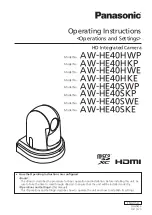
English 9
IEC 60601-1
classification
Class II (double insulation) and/or Internally
Powered Equipment, IP21, Continuous
Operation (from mains), Limited Operation
(from battery), Equipment not suitable for use
in the presence of a flammable anaesthetic
mixture with air, or nitrous oxide.
The External Battery, while connected to a
device and discharging, is rated to IP21 (Drip
proof) according to IEC60529. The AC power
supply and the Astral External Battery are both
rated to IP21.
Battery run time
< 8 hrs of typical use
1
1
Operating hours with a new battery under normal conditions. Test
conditions: Adult, P(A)CV mode, P insp: 20 hPa, PEEP: Off, Rate: 15 BPM,
Ti: 1.2s. Time may vary with environmental conditions.
Note:
The manufacturer reserves the right to change these
specifications without notice.
Symbols
The following symbols may appear on the device or packaging:
Attention, consult accompanying documents;
Read
instructions before use;
21
Protected against finger sized objects
and against vertically dripping water;
Class II equipment;
European RoHS;
Batch Code;
Serial number;
Catalogue number;
8
Humidity limitation;
Keep dry;
Temperature limitation (storage and transport);
External
Battery charge level;
External Battery charging indicator;
Direct current;
O I
DC on/off;
DC Input port;
DC
Output;
Do not use if package is damaged;
Canadian
Standards Association;
Manufacturer;
European
Authorized Representative
Environmental Information
Disposal of the battery should be carried out in accordance with
applicable national laws and regulations. WEEE 2002/96/EC is a
European Directive that requires the proper disposal of electrical
and electronic equipment. The battery should be disposed of
separately, not as unsorted municipal waste. To dispose of your
battery, you should use appropriate collection, reuse and recycling
systems available in your region. The use of these collection, reuse
and recycling systems is designed to reduce pressure on natural
resources and prevent hazardous substances from damaging the
environment. European Directive 2006/66/EC requires the proper
disposal of spent batteries. The battery may only be returned to
collection points fully discharged. If charged or partially discharged,
care should be taken to prevent short circuiting. Batteries containing
more than 0.0005% of mercury by mass, more than 0.002% of
cadmium by mass or more than 0.004% of lead by mass are marked
below the crossed-bin symbol with the chemical symbols (Hg, Cd,
Pb) of the metals for which the limit is exceeded.
































